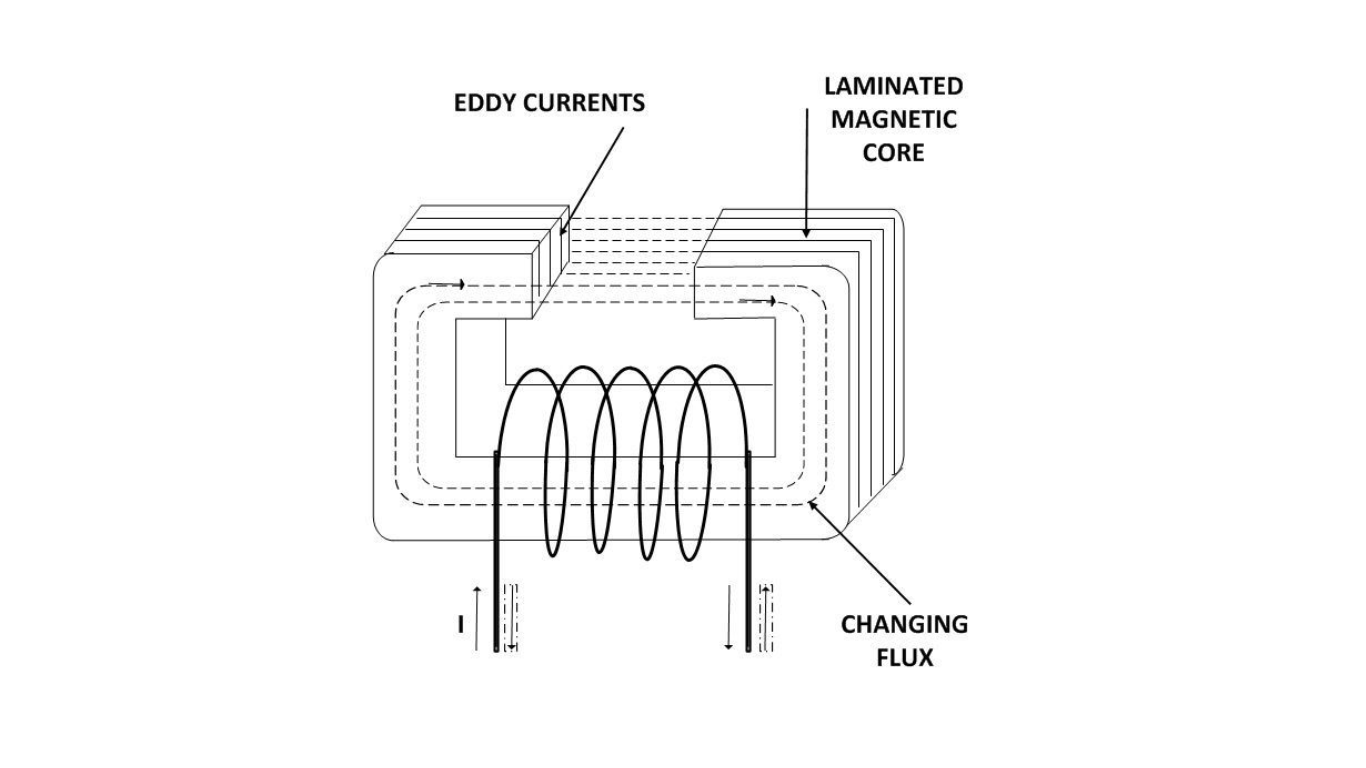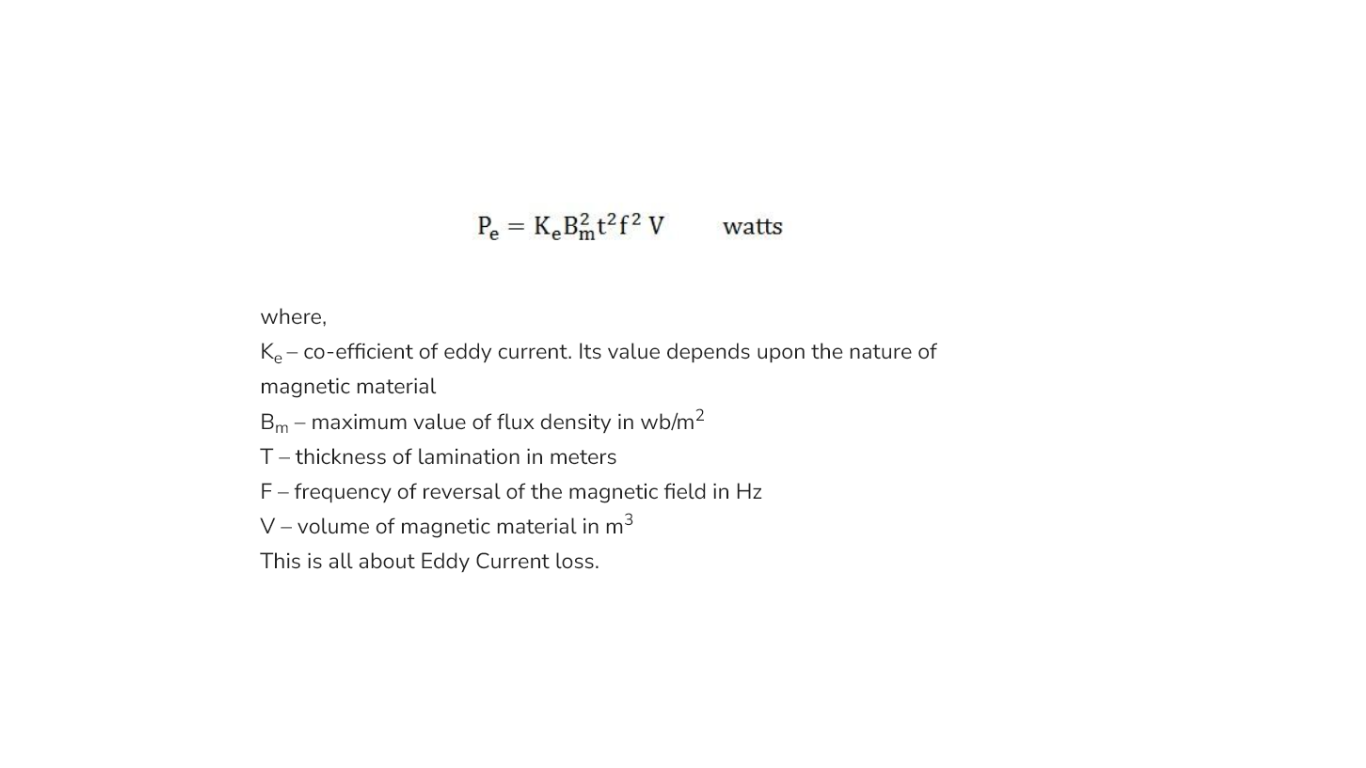What is Eddy Current – Definition and Applications
Eddy currents are circulating currents that occur within a conducting material when exposed to a changing magnetic field. In the context of magnetic materials, these currents can lead to the generation of heat and cause a loss of energy. Similar to hysteresis loss, eddy current loss contributes to an increase in the temperature of the magnetic material. Both hysteresis loss and eddy current loss are often referred to as iron losses, core losses, or magnetic losses.

Understanding Eddy Current Loss
In the figure above, we can observe a sectional view of a magnetic core. When the changing magnetic flux links with the core, it induces an electromotive force (emf) within the core, resulting in the formation of eddy currents. These eddy currents, in turn, give rise to a loss known as eddy current loss or (I2R) loss, where “I” represents the current value and “R” signifies the resistance of the eddy current path.
If the core is composed of solid iron with a larger cross-sectional area, the magnitude of the current (“I”) will be substantial, consequently leading to higher losses. To mitigate eddy current loss, two primary methods are commonly employed:
1. Reducing the Magnitude of Eddy Current
One effective approach to minimize eddy current magnitude is by splitting the solid core into thin sheets known as laminations. These laminations are arranged parallel to the magnetic field and are insulated from each other using a thin layer of varnish or oxide film coating. By laminating the core, the cross-sectional area of each section is reduced, resulting in a reduction in the induced emf. As a consequence, the current path’s resistance increases due to the decreased area through which the current flows.
2. Using Magnetic Materials with Higher Resistivity
Another technique to reduce eddy current loss is by employing magnetic materials with higher resistivity, such as silicon steel. The choice of a magnetic material with higher resistivity helps lower the overall eddy current loss.
Applications of Eddy Currents
While eddy currents primarily contribute to energy loss in AC machines like transformers, generators, and motors, they do find applications in certain contexts:
- Induction Heating: Eddy currents generate a significant amount of heat at the outermost part of an iron shaft when a high-frequency current is passed through the induction coil. This process is utilized for surface hardening of heavy shafts, commonly employed in automobiles.
- Electrical Instruments: Eddy currents play a role in electrical instruments, such as induction-type energy meters, where they provide braking torque. They also contribute to damping torque in permanent magnet moving coil instruments.
- Crack Detection: Eddy current instruments are utilized to detect cracks in metal parts. They offer a reliable method for identifying potential structural weaknesses.
- Eddy Current Brakes: Trains equipped with eddy current brakes utilize the effects of eddy currents to enable smooth braking, ensuring enhanced safety and control.
Mathematical Expression for Eddy Current Loss
Determining the precise eddy current loss based on resistance and current values is challenging. However, through experimental analysis, the power loss resulting from eddy currents in a magnetic material can be approximated using the following equation:

Conclusion
Eddy current loss is a significant aspect to consider when analyzing the behavior of magnetic materials subjected to alternating magnetic fields. By understanding the underlying principles and employing effective techniques like laminating the core and using materials with higher resistivity, it becomes possible to mitigate eddy current losses. Furthermore, exploring the applications of eddy currents in various fields reveals their relevance and potential for practical use.